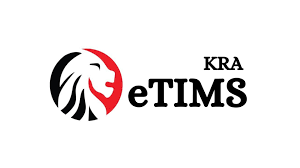You may have heard of the term “project audit” before, but you’re not quite sure what it means. A project audit is a process by which the overall health and status of a project is assessed. This includes reviewing all aspects of the project, from its inception through to completion. It is typically carried out by a third party, such as an independent consultant or contractor.
Who Performs a Project Audit?
A project audit can be carried out by anyone with the necessary knowledge and experience. However, it is typically performed by a third party such as an independent consultant or contractor. This ensures that the audit is impartial and unbiased.
What Is Included in a Project Audit?
A project audit includes a review of all aspects of the project, from its inception through to completion. This includes examining the business case, planning documents, budget, schedule, resources, and deliverables. The audit also assesses how well the project is being managed and whether it is on track to meet its objectives.
How is a Project Audit Done?
The auditor is responsible for performing the assessment and issuing the report. They will review documents, interview team members, and observe work in progress to determine if the project is proceeding according to plan.
The audit typically takes place near the end of a project, but it can also be conducted during different stages depending on the needs of the organization. It is important to note that not all projects require an audit – only those with higher risk factors should undergo this process.
Once the auditor has completed their assessment, they will issue a report that includes their findings and recommendations. The report is then shared with the project team who will need to take action to address any issues that were identified.
The audit process can be beneficial for both the organization and the project team. It helps ensure that projects are being executed effectively and efficiently, while also providing an opportunity for improvement. By identifying potential problems early on, corrective actions can be taken before they cause any significant damage.
Types of Project Audits
Financial audit
A financial audit is used to ensure that records are accurate, complete, timely and valid. Financial audits may address all aspects of accounting including cash, receivables, inventory valuation, fixed assets, capital expenditures and revenues. This type of audit is often conducted at the close of an accounting period by an independent accountant or auditing firm. The process itself usually requires several months to complete. An auditor will issue a report after reviewing company documentation related to the financial statements being prepared for external use. A review report offers limited assurance that the financial statements are free from material misstatement, however, a clean audit opinion indicates that the financial statements and accompanying notes comply with Generally Accepted Accounting Principles (GAAP). A company is required to have an annual external audit in order to provide potential lenders and investors their needed assurance of accuracy and validity.
Risk assessment
A risk assessment provides a list of current risks, mitigation goals and the related tasks to accomplish those goals within a given time frame. Risk assessments can help companies identify areas where internal controls need improvement or where new controls should be implemented. It is imperative for an organization to perform periodic reviews of its risks so that additional audits may be scheduled as deemed necessary. The process helps organizations maintain strong internal controls which will likely reduce its exposure to fraud, waste and abuse.
Project Performance Audit
A project performance audit provides an analysis of the performance of a project based upon the initial goals set forth for the project. This type of audit may be performed in order to evaluate present or past investments in projects, processes or policies so that future projects are more likely to succeed. A project’s progress is usually measured against deadlines, costs, resources utilized and materials purchased. The review may also identify anomalies between planned expenditure and actual expenditures. It is common for this type of audit to be performed soon after a project has been completed so that lessons learned can be applied toward future projects. A Project Management Institute (PMI) study showed that only 28 percent of organizations were “very effective” in delivering projects on time and on budget.
Procurement audit
A procurement audit is an independent evaluation of a company’s procurement policies and procedures. It helps you determine whether or not your existing policies are efficient and effective, and if they can be improved or enhanced. Procurement and evaluation audits are conducted when there are reasons to believe that procurement procedures have been compromised in some way. This could include deliberate, unauthorized or wasteful expenditure, contract splitting , or the award of a contract to an unqualified vendor. This type of audit is generally used as a way to continually check that purchasing procedures are being effectively maintained. In addition, many use procurement audits in order to determine whether any actions need to be taken in order to make sure that risks such as fraud, bribery, corruption, or overspending are kept under control.
System audit
A system audit is used to ensure that the information contained within an organization’s systems is accurate. System audits may be aimed at computerized systems such as databases and networks but can also include manual filing systems and other related equipment. This type of audit generally only addresses information stored or transmitted electronically by a company. An auditor will review documentation related to the particular system(s) being audited, interview employees who work with those systems and perform tests such as confirmation calls to verify proper transactions have occurred. By comparing expected outputs to actual outputs, it is possible for an auditor to identify errors made by inputting or processing information resulting in significant loss of revenue or assets.
Control self-assessment
A control self-assessment identifies the controls that are currently in place within an organization so that it can determine if those controls are effective. Control self assessments may be performed by organizations as part of their risk management process or they may be mandated by an outside entity including a federal agency, auditor or governing body. Control self assessments help identify both existing and potential issues related to internal controls which will likely impact an organization’s financial results. It is important for companies to realize that not all risks can be identified through this process because many risks are never realized. Identifying areas where additional controls are needed will prevent problems from occurring in the future. The most common type of compliance requirement requiring this type of review is Sarbanes-Oxley (SOX).
Benefits of Project Auditing
The benefits of auditing your project are as follows:
Identifies areas for improvement: A project audit provides objective feedback on how well your projects are performing and identifies areas for improvement. A thorough review makes it possible to pinpoint problems and establish realistic goals and timelines moving forward — no matter which area of your business needs development or support, we can help you achieve tangible results.
Assesses future initiative projects: A project audit provides a format for evaluating projects. Demonstrating this process in the context of current and proposed initiatives, lets stakeholders know you take your role in decision-making seriously and helps them understand just what they can expect from new projects.
Improves company’s productivity: Accomplished employees are more engaged across all departments when they know that their work is making an impact on the business . A consulting firm’s IT project audit can help validate your organization’s prominent role within any industry vertical, attracting additional talent without breaking the bank. In addition to establishing milestones tied directly to a project’s top priorities, an audit can identify staffing needs and other required resources so you can execute projects more efficiently while still meeting legal, financial and operational requirements.
Facilitates decision-making for new projects: An impartial analysis of past initiatives provides valuable context that helps prioritize new investments in the form of market research reports, budgetary projections and other helpful tools . Whether your company is looking to take on new projects or plans to add staff, having an effective method for submission requests makes it possible to guide decision-making without losing control. Problems with current or proposed initiatives fall into two categories: issues you can resolve quickly and problems that require major changes. A project audit helps you stay ahead of the game by providing insight into your organization’s strengths and weaknesses so you can avoid making costly mistakes.
Conclusion
Project audits are an invaluable tool for determining whether a project has been successful, and if not, how the failures can be avoided in future projects. They allow you to analyze past projects and use that knowledge as a guide in future projects. The best method to audit is to be impartial throughout the process, never letting emotions or personal biases influence your judgement. Enlist other sources to maintain objectivity, and consider your own feelings as you review. Auditing your project is key to knowing what you need and to building a good project. Quality over quantity they say and this is true across the board especially in the world of cannabis. With so many auditing companies out there, you have to make sure you pick the right one.














